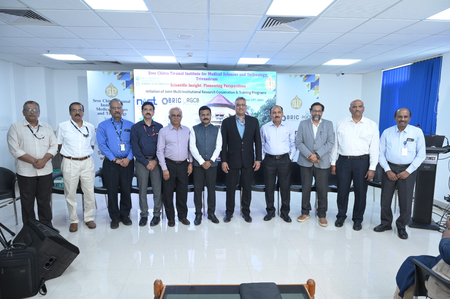By Contributor,William A. Haseltine
Copyright forbes

Duchenne therapy may be evolving from slowing disease to reversing it—with RNA approaches offering the prospect of restoring function. Ongoing research will determine if these advances can deliver lasting, transformative recovery.
Image by freepik
New clinical evidence points to a potential breakthrough: a therapy that may not just slow but actually reverse muscle loss in boys with Duchenne muscular dystrophy. While existing treatments, such as corticosteroids and gene-targeted drugs, only modestly delay symptoms, the new findings—if validated in larger studies—could mark a shift from managing decline to possibly regaining lost muscle function. This would offer new hope in a previously incurable and relentlessly progressive disease.
A New Approach With RNA
Sarepta Therapeutics currently leads the field of Duchenne therapy with its treatments that deliver a shortened dystrophin gene. Trials showed slowed progression and small motor gains, mostly in younger boys. However, effectiveness may drop in older patients. Durability and immune responses also remain concerns. Furthermore, there have been a few patient deaths during the trials.
In contrast, Avidity’s approach uses precision RNA delivery for ongoing dystrophin modulation, rather than a one-time gene transfer. The RNA technology enhances dystrophin, the crucial muscle protein lacking in Duchenne muscular dystrophy. A lack of dystrophin leads to the breakdown of muscle fibers. This results in loss of mobility and early death in adolescence or young adulthood. Early results show the new investigational approach promotes muscle repair.
Standard therapies modestly extend mobility but are constrained by only partial dystrophin restoration and limited genetic applicability. The investigational agent del-zota delivers RNA directly to muscle cells, stimulating endogenous dystrophin production and potentially addressing these limitations, especially for symptomatic patients.
Reversing muscle damage in Duchenne would be a breakthrough. Early clinical studies found that boys treated with del-zota showed improvements in strength and mobility, suggesting both a slowed decline and some regained abilities. Data from boys aged six to eleven showed tolerability and apparent biological activity. Muscle biopsies confirmed the restoration of dystrophin—a biomarker linked to functional improvement. Functional tests showed improvement after several months of treatment. Family reports also noted greater endurance. Independent assessments suggest gains may exceed those usually seen in Duchenne trials.
MORE FOR YOU
Cautious Optimism From the Field
In light of these findings, neuromuscular experts have expressed cautious optimism. The history of Duchenne research includes several early-stage therapies that ultimately failed in larger trials. Still, the consistent restoration of dystrophin and associated functional improvements suggest it may represent a meaningful advance. Notably, the ability to administer repeat doses could mitigate challenges seen with single-dose gene therapies. These include immune reactions and waning efficacy; therefore, Ongoing safety monitoring remains essential. However, to date, most adverse events reported in trials have been mild or moderate in severity.
Reflecting this cautious optimism, these encouraging results have already led to regulatory engagement. Avidity Biosciences plans to submit its initial biologics license application to the U.S. Food and Drug Administration soon. They will be seeking accelerated approval following the recent breakthrough therapy designation. Although the term ‘accelerated approval’ may suggest a rapid process, the underlying technology has undergone extensive evaluation in multiple settings over several years.
Further supporting this regulatory momentum, it is also notable that the components of the conjugated antibody technology used in this therapy are well characterized and have been applied in oncology and other therapeutic areas. This experience reinforces confidence in the platform’s scalability and reliability. Additionally, it’s crucial to acknowledge that the longer it takes to reach patients, the more muscle is lost, and it often cannot be regained. This underscores the responsibility of researchers, clinicians, and regulators to strike a balance between timely access and rigorous evaluation.
Future Directions
If confirmed in larger trials, this platform could address more than Duchenne. Many rare muscle diseases stem from specific issues with proteins. By delivering RNA to muscle—where it serves as instructions for building or repairing proteins—this technology could be adapted to address disorders such as limb-girdle muscular dystrophies and age-related muscle loss. Upcoming trials will test del-zota in larger patient groups and over longer periods to prove sustained benefit. Regulators will require strong evidence of functional improvements, including improvements in mobility, respiration, and survival.
Duchenne therapy may be evolving from slowing disease to reversing it—with RNA approaches offering the prospect of restoring function. Ongoing research will determine if these advances can deliver lasting, transformative recovery.
Editorial StandardsReprints & Permissions



